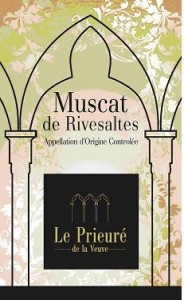 Confusing Muscat
Confusing Muscat
Muscat is really confusing. You think you know it because Muscat has that hear-me-roar smell that makes even aromatic wines like Gewurtz and Riesling bow in admiration. Truly, if there is a smelly wine king, Muscat is he.
Fecund as a Father, a Founding Father
Perhaps unsurprisingly for a king, Muscat is also incredibly fertile and has more offspring than Benjamin Franklin and Thomas Jefferson combined. And yes, this fecundity makes for very awkward family reunions. Worse still, Muscat is a mutant so image some shape-shifting virile Founding Father and you have an idea who this Muscat character actually is.
Someone told me there are nine Muscat families, presumably all somehow related and trading on Mr. Muscat’s namesake. On this blog, we’re up to Muscat #3 – Muscat of Alexandria. History buffs will already be able to tell where this grape comes from and which queen quaffed this grape before the asp had the last word.
 Brewer in the Muscat Family
Brewer in the Muscat Family
Muscat of Alexandria is apparently the unscented Muscat of the family who bathes often and refuses perfume like many of his brethren and sistern. He would be perfect to work at a sake brewery, where even the faintest hint of a smell gets into the sake. Muscat would not be in your sake.
No Mancloud of Muscat
As with most unscented men (Mr. Zapato excepted), he’s not that popular. Women like the tall, dark and scented men who wear Italian cut shirts and ferment each more in cologne. Men who love to ride elevators just to asphyxiate lesser mortals who haven’t yet developed the ability to travel in clouds of Acqua di Gio. Muscat of Alexandria spends most of his time at the table wine section, probably busing the tables of his more odoriferous Muscat relatives.
Allez cuisine!
Thankfully, with the right TLC from Mother Nature, there are regions where Muscat of Alexandria reigns supreme in regal dessert wine splendor. Setúbal, Banyuls and Malaga – three tiny regions that won’t be on your wine map unless your wine map is much better than the crayola-marked version hanging on my wall. Setúbal makes a dessert wine called “Moscatel de Setúbal” – spoiler alert, it’s Muscat of Alexandria. Banyuls is in France, literally spitting distance from Spain, and makes its dessert wine from Muscat of Alexandria – its wine’s name, being French, is the same as the location – Banyuls. Malaga takes its Muscat of Alexandria, swirls it with the sherry grape Pedro Ximenez, and punches out the third of the Muscat of Alexandria dessert wines. To the best of my knowledge, none of these have a picture of Cleopatra VII on their bottles.
Taste
This particular wine is from the Banyuls region and, true to form, is a sweet dessert wine. Thanks to the good folks at Claret Wine Bar in Sunnyside, Queens, which is easily the best wine bar in a three neighborhood radius, we know this featured wine is 70% Muscat of Alexandria and 30% Muscat Petit Grain (aka millions of other names). For this wine, we’re talking lots of apple smell, extremely sweet taste and a big taste of apricot and some other fruits that better tasters would be able to identify.
Detail Up!
Muscat de Rivesaltes “La Prieure de la Vin” 2009 from Banyuls in Languedoc-Roussillon, France
Random Googles:
* Muscat de Rivesaltes (confusingly made from two grapes also named Muscat) is a French dessert wine with an elfin cousin who only appears around Christmastime – Muscat de Noël.
* South Africans call this grape “Hanepoot” and somebody at Jo-burg thinks it’s a Pan-African panacea.
* Wisconsin, one of 50 states in the US to produce wine, puts Muscat of Alexandria at the top of its wine tourism blurb. Strangely, they fail to mention cheese.